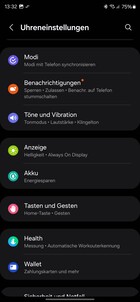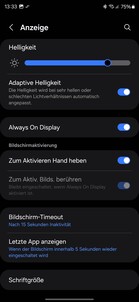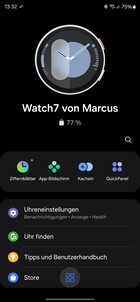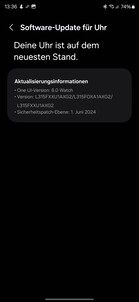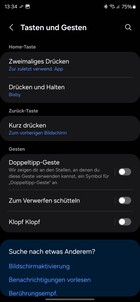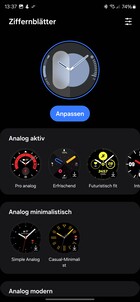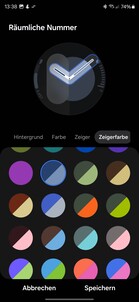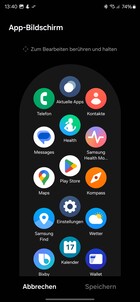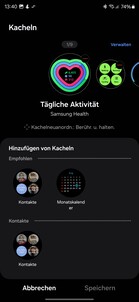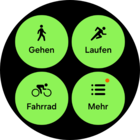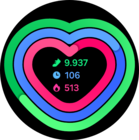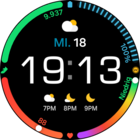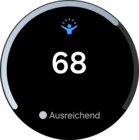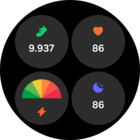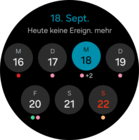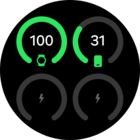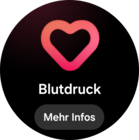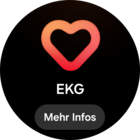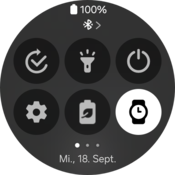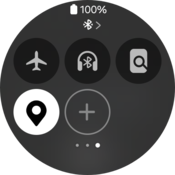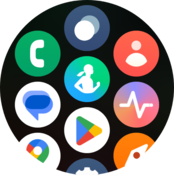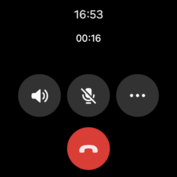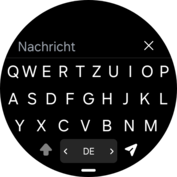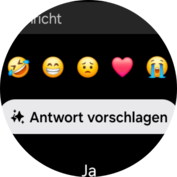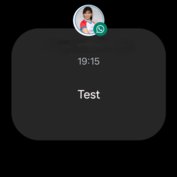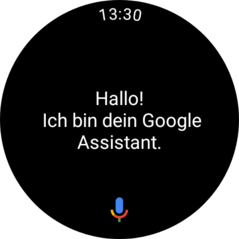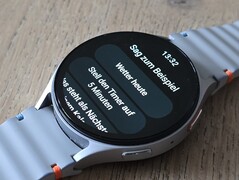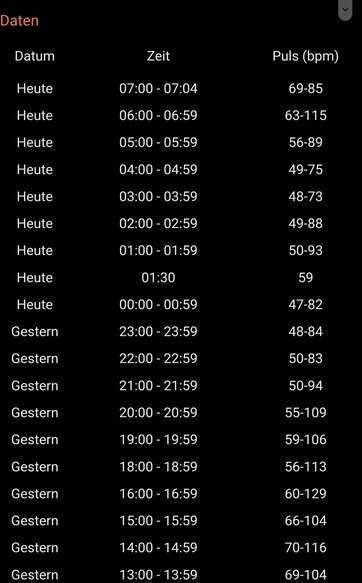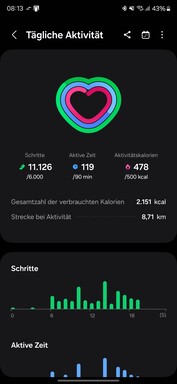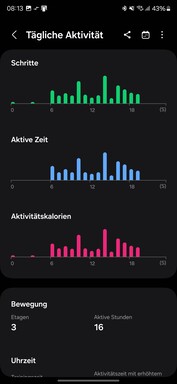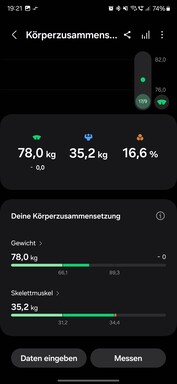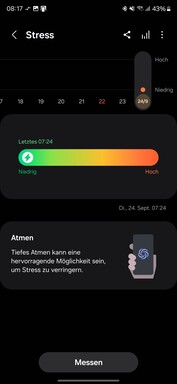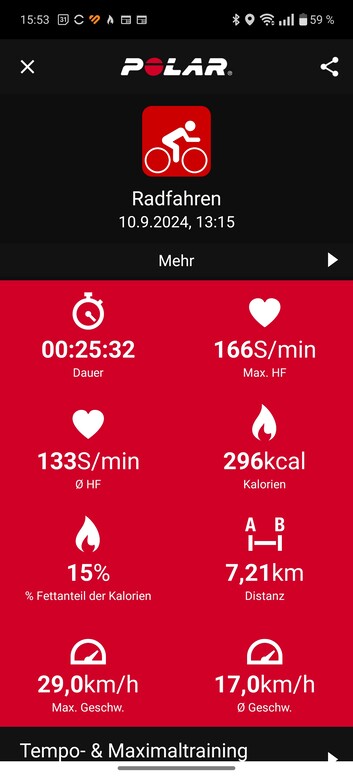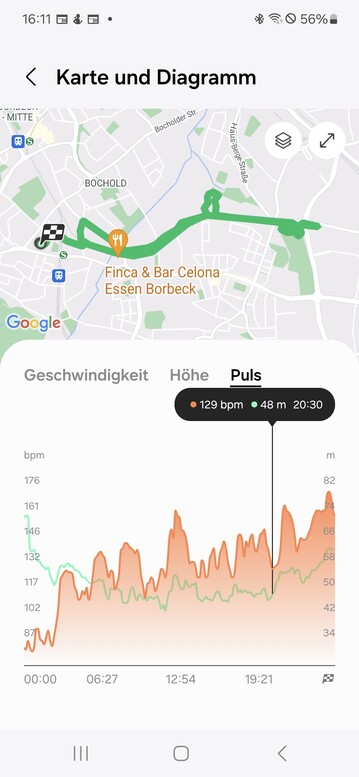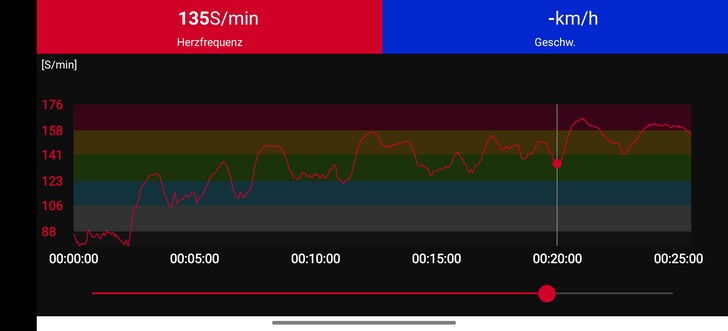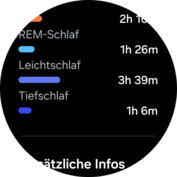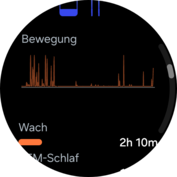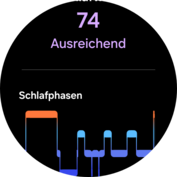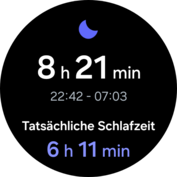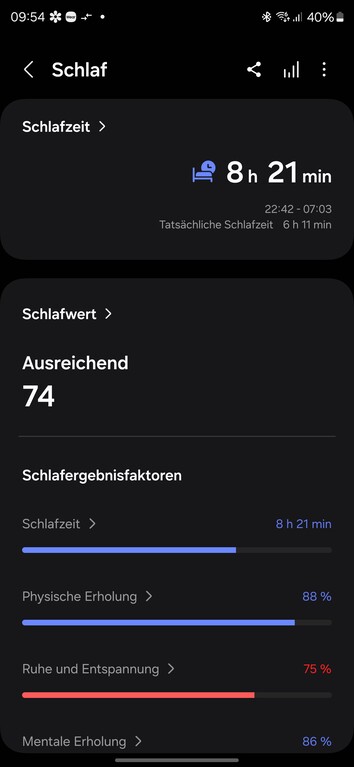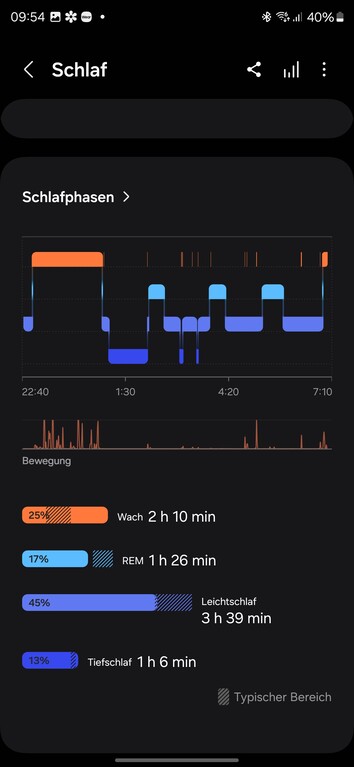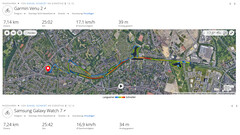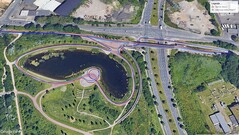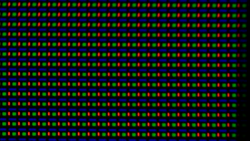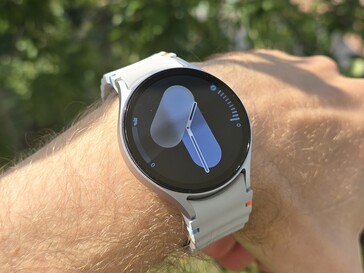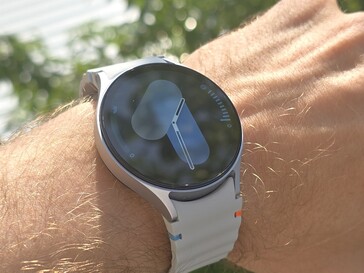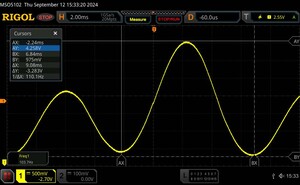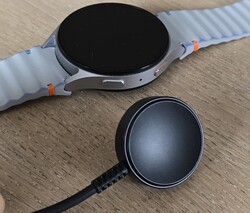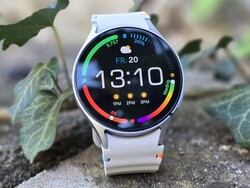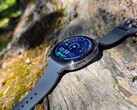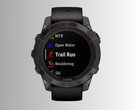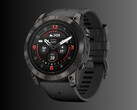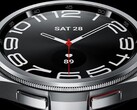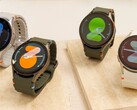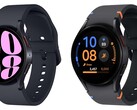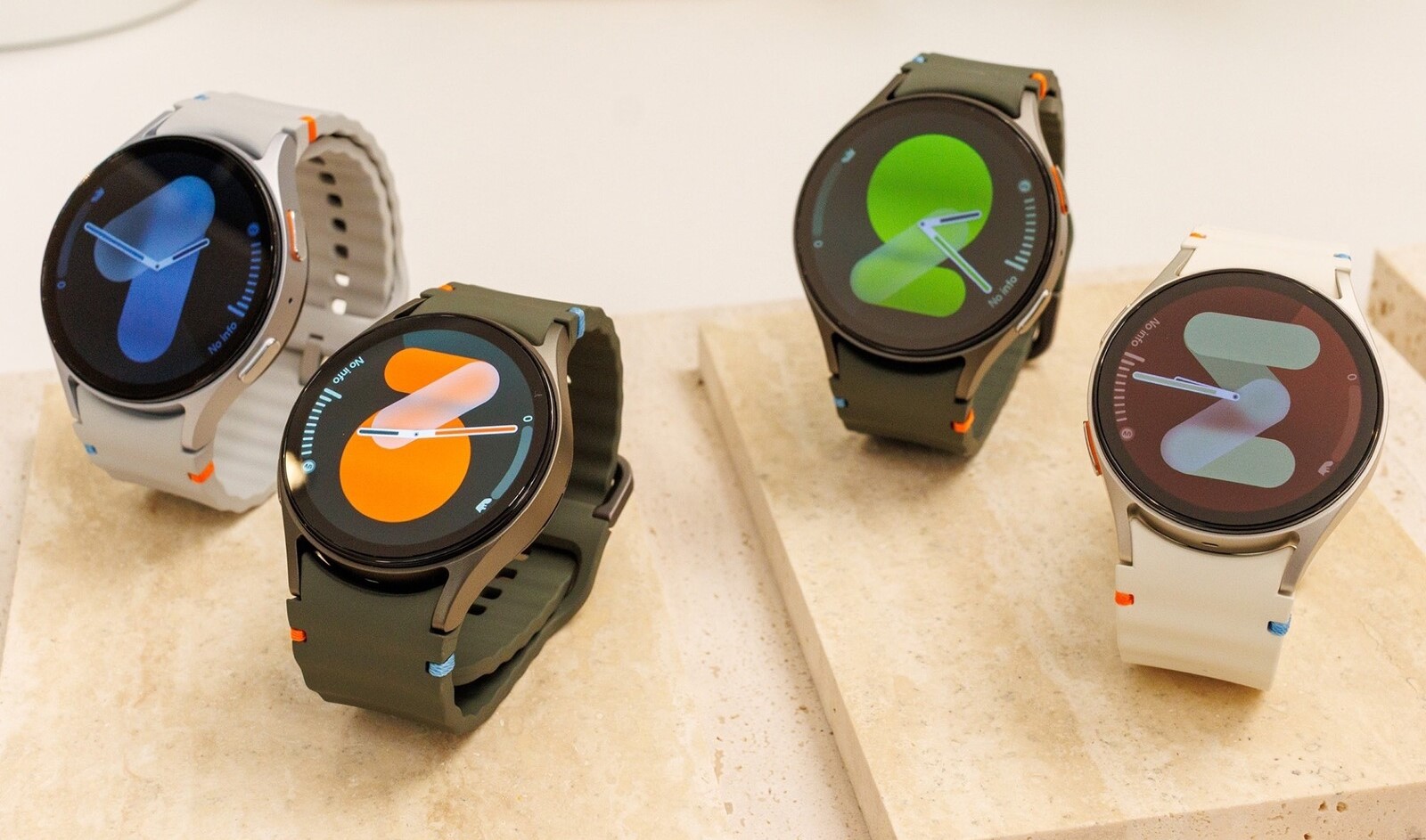
Samsung Galaxy Watch 7 LTE (44 mm) review - Samsung smartwatch makes a giant leap in performance
Galaxy AI fails to add value.
The Galaxy Watch7 can look forward to numerous upgrades. The new BioActive sensor on the Samsung smartwatch is particularly promising. Thanks to the Exynos W1000, the battery problems of the Galaxy watches should also be a thing of the past. A must-buy for Samsung users?Marcus Herbrich, 👁 Daniel Schmidt, ✓ Brian Burriston (translated by DeepL / Ninh Duy) Published 🇩🇪 🇫🇷 ...
The Galaxy Watch7 follows in the footsteps of the Galaxy Watch6 and is still available in two sizes. The variants with a case diameter of 40 and 44 millimetres (~1.57 and 1.73 inches) differ in particular in terms of the size of the display, the battery and the choice of colors.
With the improved BioActive sensor, Samsung has added new health features to its seventh generation of smartwatches and, according to the manufacturer, a more precise measurement of heart rate and blood oxygen. With the new 3-nm-Exynos-W1000-Chip the Galaxy Watch7 is also said to work 30 percent more efficiently than its predecessor and achieve up to 3.7 times higher CPU performance.
The Samsung smartwatch will be launched in Germany for a recommended retail price of 319 Euros (40 mm/~$348) and 349 Euros (44 mm/~$381). The versions with an integrated LTE modem will be available for 369 Euros and 399 Euros (~$403 and $436) respectively, depending on the size.
Case and features - Galaxy Watch 7 with new sensor technology
The Galaxy Watch7 looks like the older Galaxy Watch6 and is still made of aluminum - Samsung calls this Armor Aluminum - and not a titanium alloy like the Ultra model. The case and the buttons are slightly matte, which means that grease residue from fingers is not a problem. There is a microphone between the two buttons on the right-hand side.
In terms of resistance to water and dust, the Samsung smartwatch offers IP68 certification, which guarantees protection against dust and water (1.5 m water depth for 30 minutes). However, this does not apply to a dip in the sea with salt water. The housing is also tested in accordance with the US military standard MIL-STD-810H and should therefore withstand a high temperature range (-40 °C to 71 °C/-40 °F to 158 °F), freezing rain, mechanical shocks and vibrations without damage.
The 1.5-inch OLED display in our 44 mm version is protected by sapphire glass; Samsung specifies a slightly lower pressure resistance value of 24 GPa than, for example, the Galaxy Watch5 Pro. The digital bezel familiar from its predecessor, an area with sensors between the display and the edge of the case, is also built into the Watch7.
The sports strap included with our test device is made of sweat-resistant rubber material and has a wave structure. The 20-millimeter (~0.8 in) strap is changed using a central button and metal pins. Choices include S/M circumference, from 130 to 190 mm and M/L circumference, from 145 to 205 mm (~5.1 to 7.5 and ~5.7 to 8.1 inches respectively).
Sustainability
Samsung does not provide any official information on the use of recycled materials or the recyclability of the components used in its Galaxy Watch7. On the homepage of the manufacturer the "Smartwatch" category is missing. However, Samsung always lists recyclable materials such as aluminum, copper, iron, plastic and even precious metals for the listed product groups.
Setup and operation - Samsung smartwatch with many watch faces
To set up the Galaxy Watch7, the Wear app from Samsung must be installed on the smartphone. This requires Android version 11 or higher and Google Mobile Services, i.e. a connection to an Apple iPhone 16 Plus including iOS is not possible. However, this also means that Huawei devices are not compatible. Similar to the Apple cosmos - in this case from the Android range - tablets cannot be used with the Watch7. In our opinion, this is an unnecessary restriction. As a companion cell phone in the test, we used a Galaxy S24 Ultra which immediately displayed the Samsung Watch. Setting up the Watch7 is then very simple.
It can be linked to a Samsung and/or Google account. By logging in with a Samsung account, additional functions such as locating the smartwatch and creating backups can be used. Unfortunately, some health functions appear to be exclusive to owners of Samsung phones; this includes fall detection, ECG measurement and blood pressure measurement.
The Galaxy smartwatch also has a skin temperature sensor and a BIA sensor, which can not only determine the body's fat and muscle percentage, but also glycation end products (AGEs). The AGEs index is intended to provide users with information on how changes in diet and lifestyle affect their body. The determined heart rate and SpO2 values should also be more precise than with the predecessor. A new feature is sleep apnoea detection, which is expected to be available via a software update from Q2 2025 via an update to the Galaxy watch. According to Samsung, the function is currently in the testing and certification phase. The irregular heart rhythm notification (IHRN), which indicates atrial fibrillation (AFib), will also be added later (Q4 2024).
The Wear app offers many options for customizing the Watch7 to your personal preferences. This includes quick access to a variety of watch faces and the arrangement of menu items (QuickPanel), widgets and apps can also be customized. The user can also specify which app is to be provided with notifications and whether the Samsung Wallet payment service or an eSIM (for the LTE version) should be stored. Basic functions such as vibration strength, brightness or the always-on display can also be set directly on the Galaxy smartwatch.
In our test sample, the Watch7 is operated via the 1.5-inch touchscreen and two buttons on the frame. The orange-accented home button takes you back to the watch interface with a single press, but also supports double taps and long presses. Any app can be assigned with a double press. The long press of the home button, on the other hand, is somewhat more limited and can be used for the voice assistants or the switch-off menu. The lower button can also only be customized to a limited extent. Either a step back is performed when it is pressed or the overview of open apps is opened.
The Galaxy Watch7 also supports various gestures. A double tap of the thumb and index finger can be used to answer or end a phone call, while a hand shake gesture can mute the timer or alarm. Individual apps can also be assigned a "tap-tap" hand gesture, which involves shaking the wrist.
Telephony and notifications
Like his Predecessors, the Watch7 also supports independent phone calls thanks to a built-in microphone and speaker, provided the paired smartphone is within Bluetooth range. With the LTE version, calls can also be made without the paired cell phone if the SIM card is activated. Incoming calls are displayed on the Watch7 and can be answered and ended directly. However, the voice quality is not comparable to a smartphone. With a normal arm position, it is difficult to be understood and even when speaking directly into the microphone, the clarity sometimes leaves a lot to be desired.
However, there is not much to complain about when it comes to notifications. The Samsung smartwatch displays all incoming notifications very reliably and in real time - this is where the Samsung SoC really comes into its own here. Emojis and images are also displayed by the Galaxy Watch7. Samsung's advertised Galaxy AI can be found when replying to messages. The Galaxy AI analyzes previous conversations and suggests answers. Voice or text input is also possible via a fully-fledged keyboard. However, no special characters or numbers are available here, not even on an additional keyboard level. Thanks to WearOS, the Galaxy Watch7 has its own WhatsApp app, which can even be used to receive and send voice messages.
Voice assistant
Health and fitness - Galaxy Watch7 measures blood pressure
The data collected by the Galaxy Watch7 is not recorded in the Wear app; the Samsung Health app must be downloaded from the PlayStore for this purpose. The data for steps, heart rate, sleep values, training, ECG and blood pressure as well as the composition of the body in terms of muscle mass, fat and water are collected in the application's start menu.
It is a pity that the permanently recorded values for pulse and blood oxygen at night are only displayed in a fluctuation range. The export is also restricted to this very limited bundling of data. As a result, the development of the pulse values for a day/night can hardly be evaluated. In the case of blood oxygen at night, the lack of an export option also makes it difficult to read erroneous measurements, which makes evaluation much more difficult.
Activity goals
Activity targets, such as steps, time in motion and calories burned, are displayed in a heart graph. The target values can be adjusted as desired in the Health app. The Watch7 can also measure stress levels and AEGs.
There is a choice of over 100 different workouts and various exercises with workout routines, such as swimming, cycling or running. A new "Multisport" exercise tracks triathlon training across all sections of the course. In addition, the Galaxy Watch now measures maximum performance during cycling using the new FTP (Functional Threshold Power) function with Galaxy AI-supported metrics.
Heart rate, heart rhythm and blood oxygen saturation
The Galaxy Watch7 can measure the pulse and blood oxygen saturation as well as the ECG and blood pressure for users of a Samsung cell phone. Unlike a Huawei Watch D2 however, the Galaxy smartwatch measures blood pressure optically, which requires an additional aid. The Galaxy Watch7 must be calibrated with a blood pressure monitor every four weeks. This means that the absolute values are only as reliable as the basic accuracy of the blood pressure cuff measurement. However, according to Samsung, the blood pressure function cannot be used to diagnose high blood pressure or other illnesses. For our test, we used a Braun ExacFit 5 Connect, which is certified with a deviation of +/- 3 mmHG, as a reference device for comparison purposes. On average, three measurements resulted in a deviation of 2.7 percent (+3.3 mmHG) for the systolic value and an average deviation of 2.9 percent (+2.3 mmHG) for the diastolic value. There is no tendency to over- or underestimate.
When measuring blood oxygen saturation, we use a Braun pulse oximeter 1 as a reference device. In our three measurements, the deviation averages 5.1 percent, whereby the Galaxy Watch7 tends to significantly underestimate blood oxygen saturation. The values also fluctuate relatively strongly. In our first of three measurements, for example, the Samsung Watch is way off the mark (value: 91 percent, reference: 98 percent). The extent to which this allows valid statements to be made about sleep apnoea can be questioned, at least critically. If desired, the Galaxy Watch7 can also create an ECG of the user with the Health Monitor app, which is also required for blood pressure. However, this function is not intended for people with known cardiac arrhythmias other than atrial fibrillation.
Finally, we took a look at the heart rate data. In order to be able to classify the measured values of the Galaxy Watch7, we compared them with the Polar H10 chest strap as a reference device. We measured the heart rate during a bike ride. Here, the deviations are around five beats per minute or 0.1 percent (n=3). At rest, the value of the Galaxy watch is significantly closer to our reference (value: 71 beats per minute, Polar H10: 70 beats per minute).
Sleep tracking
In our opinion, the sleep tracking of the Galaxy Watch7 is quite plausible and comprehensive. Waking times are reliably recognized and the duration of sleep corresponds to personal perception. Sleep is divided into different sleep phases, with a distinction made between REM sleep, light sleep and deep sleep. Total sleep is also rated with points between 0 and 100.
If desired, the smartwatch can also record skin temperature and blood oxygen during the night, which are made available in a diagram. However, it is not possible to export this data. In our test, the blood oxygen values fluctuated greatly in a range between 100 and 71 percent.
Training recording
In the LTE version that we tested, the satellite connection is established for a training route even without a smartphone connection. Depending on the type of sport, the Galaxy Watch7 displays different measurement and fitness values. When hiking, for example, steps, distance, calories burned, speed and heart rate are displayed. The heart rate is also divided into individual heart rate zones .
For some sports, the Galaxy watch also has automatic training recognition. For example, the Watch7 reliably recognizes running and cycling after a few minutes and starts the workout and data recording on request.
GPS and navigation
The Galaxy Watch7 supports dual-band GNSS with the following satellite systems: GPS (L1+L5), GLONASS (L1), BeiDou (B2) and Galileo (E1). The connection is established within a few seconds. In order to check the accuracy of the Galaxy Watch7 in locating your position, we take the Samsung smartwatch on a bike ride. We compare the determined route with our reference device, the Garmin Venu 2.
The result of the GPS recording of the Galaxy smartwatch is very convincing. The measured distance of the two watches differs only marginally and the display of the route covered shows only slight differences.
Display - Samsung smartwatch shines brightly
The display in our 44 mm version measures 1.5 inches diagonally, while the small 40 mm sister model has a 1.3 inch screen. Due to its design, the AMOLED panel delivers a perfect black level and strong contrasts. At 330 and 327 PPI respectively, the resolution of both displays is also sufficiently high for a sharp image.
The display of the Galaxy Watch7 also impresses across the board in our measurement with the spectrophotometer. Compared to a Pixel Watch 2 the Samsung smartwatch is almost twice as bright. We measured a maximum brightness of almost 1,900 cd/m² with the sensor activated, which means that reflections on the glass surface are no problem even in direct sunlight. However, those who prefer to adjust the brightness manually will have to be satisfied with 612 cd/m².
Due to the built-in OLED technology, Samsung uses pulse width modulation to control the brightness. We measured a frequency of 110 Hz for the screen flickering with the Rigol software (automatic).
| Samsung Galaxy Watch7 LTE 44mm | OnePlus Watch 2 | Xiaomi Watch 2 Pro | Google Pixel Watch 2 LTE | Samsung Galaxy Watch6 44mm | |
|---|---|---|---|---|---|
| Response Times | |||||
| PWM Frequency (Hz) | 110 | 121 | 80 | 120 | 60 |
| PWM Amplitude * (%) | 15.22 | ||||
| Screen | -69% | -64% | -52% | 1% | |
| Brightness middle (cd/m²) | 1884 | 593 -69% | 684 -64% | 907 -52% | 1897 1% |
| Black Level * (cd/m²) | |||||
| Total Average (Program / Settings) | -69% /
-69% | -64% /
-64% | -52% /
-52% | 1% /
1% |
* ... smaller is better
Screen Flickering / PWM (Pulse-Width Modulation)
| Screen flickering / PWM detected | 110 Hz Amplitude: 15.22 % | ||
The display backlight flickers at 110 Hz (worst case, e.g., utilizing PWM) . The frequency of 110 Hz is very low, so the flickering may cause eyestrain and headaches after extended use. In comparison: 53 % of all tested devices do not use PWM to dim the display. If PWM was detected, an average of 8108 (minimum: 5 - maximum: 343500) Hz was measured. | |||
Performance and runtime - Galaxy Watch7 with Exynos SoC
The Galaxy Watch7 is equipped with the first 3nm processor from Samsung. The Exynos W1000 is one of the most powerful chipsets in a smartwatch, making the upgrade to the Exynos W930 in the Galaxy Watch6 is gigantic. The extreme increase in performance is due to the Cortex A78 (1.6 GHz clock frequency) in combination with four Cortex A55 cores (1.5 GHz).
In everyday use, the Exynos W1000 with Mali-G68 MP2 as the GPU unit enables very smooth operation and apps start without any significant delay. Major stutters, as in the past, are virtually non-existent. Equipped with 2 GB LPDDR5 RAM and 32 GB eMMC memory, the benchmark results of the current Galaxy Watch generation are very strong. A Galaxy Watch6 cannot even begin to keep up. Thanks to the W1000, Samsung is now at least at the level of an Apple S9.
| Octane V2 - Total Score | |
| Average Samsung Exynos W1000 (12676 - 13654, n=4) | |
| Samsung Galaxy Watch7 LTE 44mm (Samsung Browser 3.2) | |
| OnePlus Watch 2 (samsung browser 3.0) | |
| Google Pixel Watch 2 LTE (Samsung Browser 3.0) | |
| Xiaomi Watch 2 Pro (Samsung Browser 3.0) | |
| Samsung Galaxy Watch6 44mm (Samsung Browser 3.0) | |
| Apple Watch Ultra 2 | |
| Sunspider - 1.0 Total Score | |
| Samsung Galaxy Watch6 44mm (Samsung Browser 3.0) | |
| Google Pixel Watch 2 LTE (Samsung Brwoser 3.0) | |
| Xiaomi Watch 2 Pro (Samsung Browser 3.0) | |
| OnePlus Watch 2 (samsung browser 3.0) | |
| Apple Watch Ultra 2 | |
| Samsung Galaxy Watch7 LTE 44mm | |
| Average Samsung Exynos W1000 (358 - 490, n=4) | |
| Mozilla Kraken 1.1 - Total | |
| Apple Watch Ultra 2 | |
| Samsung Galaxy Watch6 44mm (Samsung Browser 3.0) | |
| Xiaomi Watch 2 Pro (Samsung Browser 3.0) | |
| OnePlus Watch 2 (samsung browser 3.0) | |
| Google Pixel Watch 2 LTE (Samsung Browser 3.0) | |
| Average Samsung Exynos W1000 (2802 - 3090, n=4) | |
| Samsung Galaxy Watch7 LTE 44mm (Samsung Browser 3.2) | |
| Speedometer 2.0 - Result 2.0 | |
| Apple Watch Ultra 2 | |
| Average Samsung Exynos W1000 (31.4 - 41.9, n=4) | |
| Samsung Galaxy Watch7 LTE 44mm (Samsung Browser 3.2) | |
| Google Pixel Watch 2 LTE (Samsung Browser 3.0) | |
| Xiaomi Watch 2 Pro (Samsung Browser 3.0) | |
| OnePlus Watch 2 (Samsung Browser 3.0) | |
| Samsung Galaxy Watch6 44mm (Samsung Browser 3.0) | |
* ... smaller is better
Battery life
Thanks to the significantly smaller structure width of Samsung's 3GAA process, the Galaxy Watch7, with the Eyxnos W1000, achieves slightly better runtimes, although the battery has not increased in size compared to its Predecessor. The 44 mm version of the Watch7 still has a capacity of 425 mAh and the 40 mm model is offered with 300 mAh.
With our test sample, we lost between 40 and 50 percent on average over a period of 24 hours when using all functions including continuous heart rate and blood oxygen measurement and with the always-on display activated. If you don't carry out a workout with GPS recording for several hours a day, you can easily make it to the evening of the second day. The endurance of the large Galaxy Watch7 is still not really good for a wearable, but the runtimes are more suitable for everyday use than with the 2023 model.
It's a shame that Samsung still can't make a real leap in charging times. At 1.5 hours, these are just as long as with the Watch6 generation. In addition to the supplied charging pad, Samsung also provides compatibility for Wireless PowerShare and QI chargers. In the test, however, we were unable to use a Galaxy S24 Ultra nor a Qi-enabled charging pad to charge our Watch7.
Pros
Cons
Verdict
The Galaxy Watch7 is almost unrivaled thanks to its excellent features and extra-bright display in combination with WearOS that is pleasantly smooth to use. With a maximum runtime of 2 days, a Huawei Watch GT 5 Pro can only laugh, but the Samsung smartwatch has the freedom of a Google Play Store with a wide variety of apps. The ability to manage voice messages in Whatsapp directly from the watch is just one of the advantages of WearOS. If you need better battery life, the Ultra model model of the Galaxy Watch may be an alternative with more endurance and similar features.
Thanks to the new chipset, using the Galaxy Watch7 is a real pleasure. However, we don't really see any added value of the Galaxy AI in everyday life.
Hardly any other smartwatch offers the comprehensive health monitoring of a Galaxy Watch7. However, the differences to a Watch6 are relatively small, meaning that a 2023 model is hardly worse than its successor. Some of the measured values seem plausible (heart rate, sleep tracking, steps), but for other data such as ECG, blood pressure and, in particular, blood oxygen saturation, only trends can be derived and should be critically scrutinized.
If you attach particular importance to the measurement of ECG and blood pressure data, you can read our test of the medically certified Huawei Watch D2 in more detail.
Price and availability
The Samsung Galaxy Watch 7 is available from Amazon or directly from the manufacturer.
Transparency
The selection of devices to be reviewed is made by our editorial team. The test sample was provided to the author as a loan by the manufacturer or retailer for the purpose of this review. The lender had no influence on this review, nor did the manufacturer receive a copy of this review before publication. There was no obligation to publish this review. As an independent media company, Notebookcheck is not subjected to the authority of manufacturers, retailers or publishers.
This is how Notebookcheck is testing
Every year, Notebookcheck independently reviews hundreds of laptops and smartphones using standardized procedures to ensure that all results are comparable. We have continuously developed our test methods for around 20 years and set industry standards in the process. In our test labs, high-quality measuring equipment is utilized by experienced technicians and editors. These tests involve a multi-stage validation process. Our complex rating system is based on hundreds of well-founded measurements and benchmarks, which maintains objectivity. Further information on our test methods can be found here.












